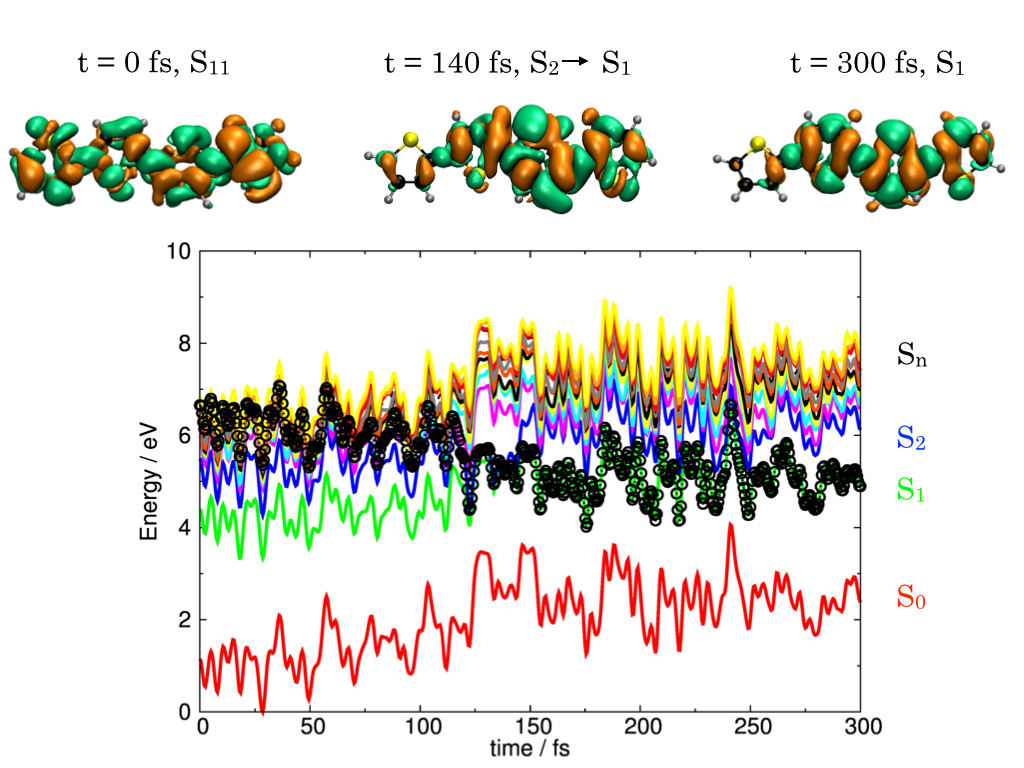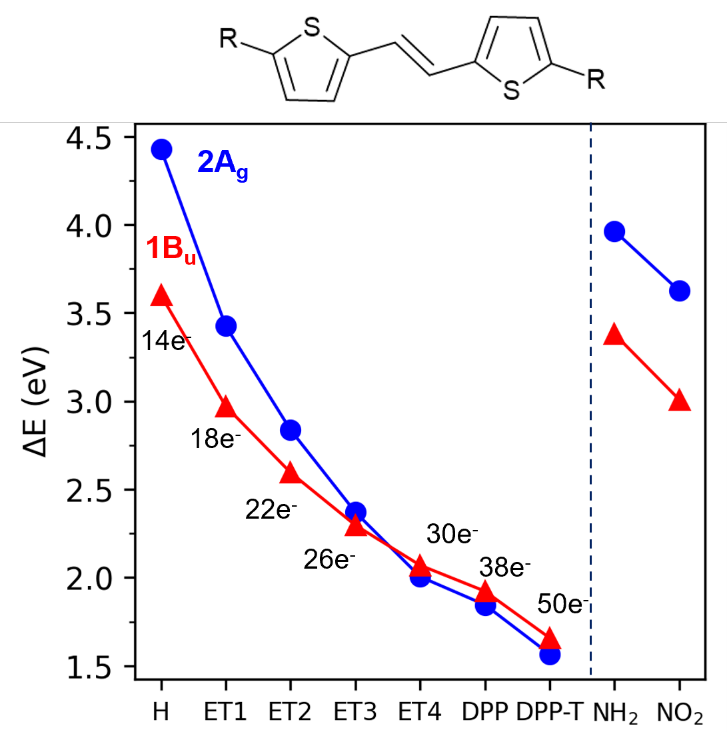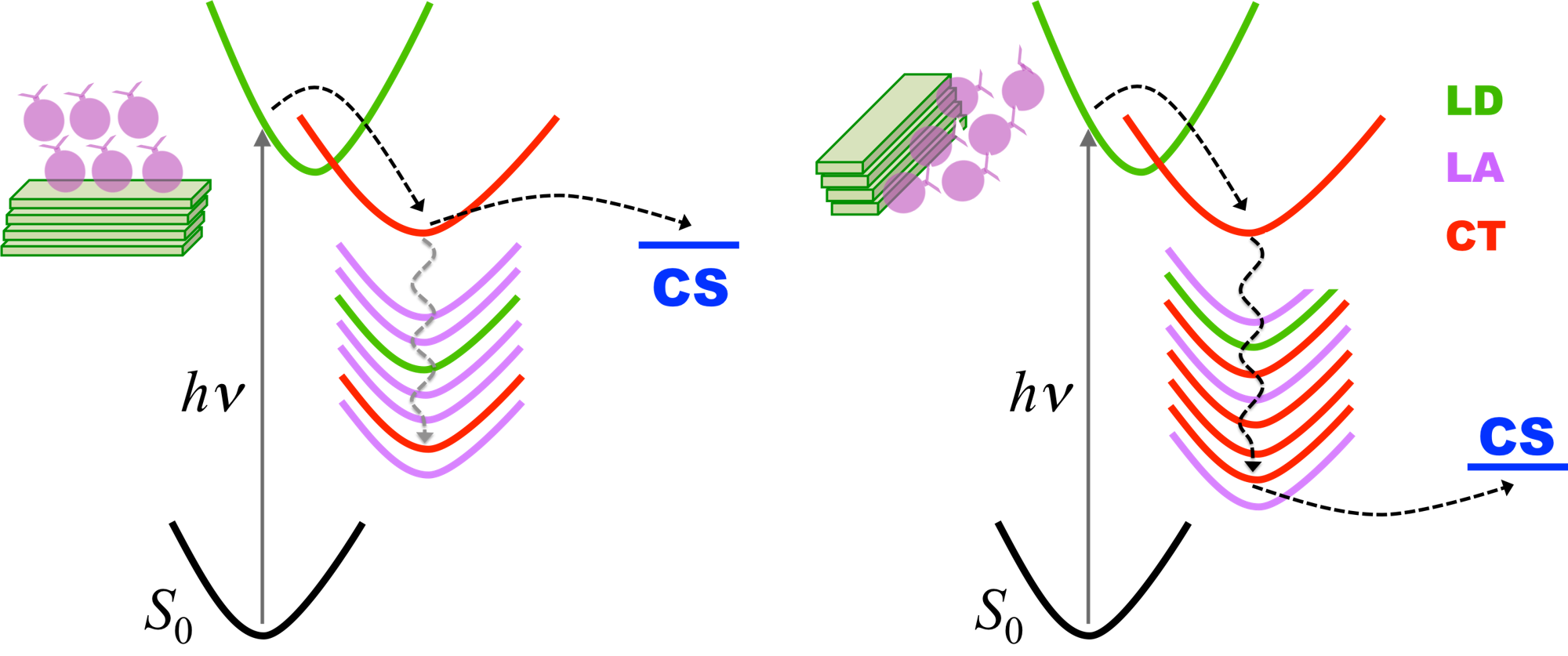Ultrafast dynamics simulations show how excitons localize in an organic polymer.
Ultrafast excited-state processes play a key role in organic electronics and photovoltaics, governing the way on how excitons can relax and separate. We have investigated this process in polythiophenes (nT, n = 1-4) using nonadiabatic excited-state dynamics.
Starting from high-energy (hot) excitations, we monitored the exciton relaxation for 300 fs. It takes place within 150-200 fs, involving bond stretching, ring puckering, and torsional oscillations.
For the longer oligomer (4T), the relaxation process leads to exciton localization over three thiophene rings.
These data agree with the self-localization mechanism (100-200 fs) measured for P3HT and shed light on the complex exciton relaxation dynamics occurring in π-conjugated oligomers of potential interest for optoelectronic applications.

Excited-state dynamics of tetrathiophene. The electronic density difference between the excited and the ground states is shown in the snapshots. Electrons flow from orange to green areas.
- D. Fazzi, M. Barbatti, W. Thiel, Modeling Ultrafast Exciton Deactivation of Oligothiophenes via Nonadiabatic Dynamics, Phys. Chem. Chem. Phys., doi:10.1039/C5CP00019J (2015). doi:10.1039/C5CP00019J



